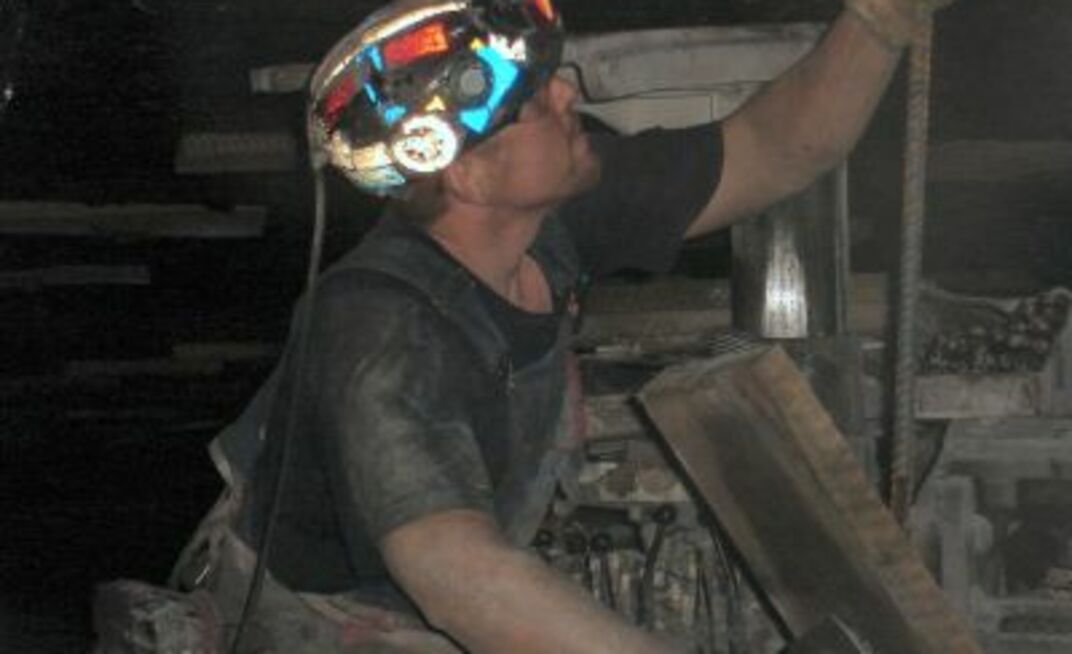Published in the March 2008 Coal USA Magazine
In the present-day mining industry, underground miner tracking systems are becoming a standardized safety and production tool for successful coal mines across the country. Until recently, most systems forced mines to supply power underground, which meant that post-accident operation included many large, expensive underground explosion-proof (XP) boxes and battery systems, thus increasing installation times, absorbing maintenance resources and increasing the final price of the system.
In an effort to overcome these obstacles, Matrix Design Group will be unveiling the newest version of the Miner and Equipment Tracking System (METS) at the annual Society of Mining, Metallurgy and Exploration (SME) conference and trade show in Salt Lake City. All underground components of the active-RFID-based tracking and wireless atmospheric monitoring system will be certified completely intrinsically safe (IS), which allows for post-accident operation even in gassy areas.
The company says its system is the first designed from the ground up to meet current West Virginia and future MINER ACT requirements.
The new METS 2.1 has the ability to provide IS power and data from above ground to its cable infrastructure allowing for redundancy and maximum survivability. Redundancy via a wired mesh topology is a key aspect of this system. Even if an accident were to occur directly on the cabling and sever the connection, the mesh topology is designed to allow the system to bypass the severed line and continue providing power and data.
METS 2.1 is made up of five main components: tracking tags, readers (SmartAntennas), infrastructure, hubs and the servers/workstation. The MSHA-approved IS METS tag, with over 5000 already used in US mines, is battery-powered for long range and is attached to a miner’s hard hat.
By mounting the tag high on a miner’s hat it is unlikely to be shielded by a tool belt, self-contained self-rescuer, or cap lamp battery from a reader, which is mounted most commonly on the roof of the mine. The time-tested tag’s unique mounting location does not require a repeater operation from a closed vehicle.
METS tags transmit a unique identifier to the new IS SmartAntennas. METS 2.1 SmartAntennas are receiving and retransmitting devices mounted at strategic points in a mine and staging areas.
SmartAntennas have multiple ports that allow for redundant connections to other antennas as well as placement in multiple entries such as intake, beltline or travelway. As the cable infrastructure and SmartAntenna are IS, antenna placement in return entries is also possible.
METS 2.1 SmartAntennas are connected to each other and the 2.1 hubs using inexpensive cable. This cable is designed to be configured as a mesh network to provide redundancy for each SmartAntenna. The underground mesh network does not require underground power or data connections in many installations.
As power is provided from above ground, no underground batteries are required for post-accident operation.
This redundant IS power is provided by 2.1 hubs, which also provide data transfer to the SmartAntennas. The 2.1 hubs are connected to a data storage server via industry-standard Ethernet architecture over fiber or MSHA/PA-approved Category 5e cable.
Native Ethernet in the 2.1 hub allows for a large number of tag broadcasts to be transmitted and stored on the server. These 2.1 hubs also contain a built-in three-port Category 5 data switch and two optional multi-mode or single-mode fiber ports.
The data storage server receives tag information and stores it in a database. The data collected by the server is visualized at the display workstation.
This workstation displays the tag information on two screens, in both graphical (map) and table formats. The display workstation is usually located in the mine monitoring room.
Matrix has also developed an IS Wireless Atmospheric Monitoring Sensor to integrate with METS. The Wireless AMS allows for quick and easy replacement and no underground recalibrating; being IS also allows for deployment in gassy areas and return air passages.
As the sensor transmits to the 2.1 wired mesh tracking network, the entire system is IS and is designed to operate post-accident.
The immediate future is looking bright for Matrix Design Group: the 2.1 system is expecting MSHA IS approval within the first quarter of 2008. Matrix is also expanding the METS product line to include an additional tag enclosure, developed by Koehler, to fasten to the front of the hat with the existing and new Koehler head lamps; development of more wireless atmospheric monitoring sensors to accompany the existing IS carbon monoxide monitor; and approval of a long-range handheld wireless reader for rescue teams.
With the help of distributors Carroll-Delta and Pillar Innovations, Matrix is looking forward to the implementation of its new systems this year.
Matrix will be performing live METS demonstrations at SME and MINExpo.
























